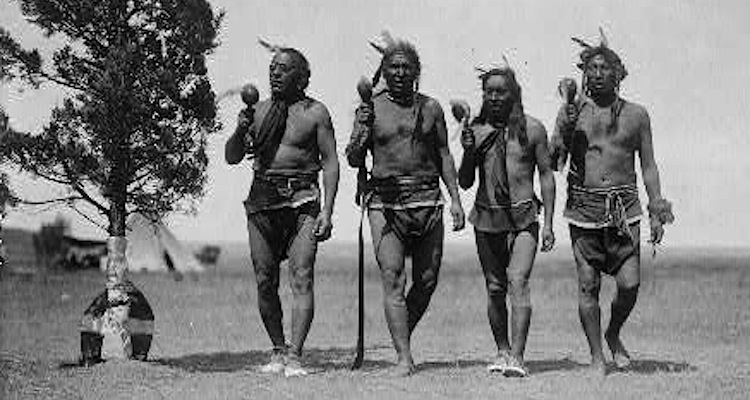When our thoughts deploy back to the June 1876 Battle of the Little Bighorn, our mind’s eye sometimes looks past Lieutenant Colonel George Armstrong Custer and the 7th U.S. Cavalry, and we see Indians, a hell of a lot of Indians! We easily visualize the Lakotas and Cheyennes camped along the Greasy Grass. And we picture the ones allied with Custer—particularly Curley, the Crow scout who first reported the Last Stand to outsiders, and Bloody Knife, the half-Sioux (his father, like Sitting Bull, was a Hunkpapa) who was Custer’s favorite scout, though he would die beside Major Marcus Reno during the ill-fated valley attack. But others of the Indians with the soldiers are a blur, if we see them at all. They are the Arikaras, sometimes called “Rees.” Bloody Knife himself was born to an Arikara mother, and far more Arikaras (40) than Crows (a half-dozen) rode with the 7th toward the Little Bighorn. What’s more, as John Koster points out this issue in “The Arikaras: Custer’s 13th Company,” while Custer sometimes called the Arikaras “scouts,” they were officially American soldiers who, unlike Indian scouts, “received government uniforms and weapons and were subject to military orders.”
The Arikaras and the Platte River Pawnees probably had the same ancestors in what would become Nebraska. The early Arikaras migrated north along the Missouri River into future South Dakota, and, after a series of smallpox epidemics, numbered about 3,000 when Meriwether Lewis and William Clark reached their villages in October 1804. The Arikaras, like the neighboring Mandans and Hidatsas, mostly grew corn and beans and sometimes hunted buffalo. The Sioux, full-time hunters, called these agriculture-minded Indians “corn eaters.” But at the time the Arikaras did join the Teton Sioux in raids on their Mandan and Hidatsa neighbors. Frontier alliances kept changing. In 1823 U.S. soldiers and Sioux allies fought the Arikaras, and after another smallpox epidemic in 1836–37 and still another in 1856 the three devastated farming tribes grew closer to one another, with the Sioux becoming their mutual enemy. In 1862 the Arikaras, Hidatsas and Mandans were living together at Like-a-Fishhook village in future North Dakota, and in 1870 the U.S. government established the Fort Berthold Indian Reservation for the tribes. Arikara men began scouting for the U.S. Army and served as guides for Custer’s Black Hills Expedition in 1874. “By 1876,” writes Koster, “the Arikaras, badly outnumbered and targeted as white allies, had more reason than ever to side with soldiers trying to contain the powerful Sioux.”
The Arikaras at the Little Bighorn turned in a mixed performance. About a half-dozen of them rushed the Sioux pony herd, captured some horses and took off with Sioux warriors in pursuit. Nine Arikaras never crossed the river, but 22 were on Reno’s left flank as his command advanced on the enemy village. In the failed fight in the valley, some Arikaras fought valiantly and two, Bob-tailed Bull and Little Brave, died along with the half-Arikara Bloody Knife. When Reno and the other survivors retreated back across the river and made a defensive stand on Reno Hill, 13 Arikaras fought alongside the soldiers. “Of the 26 Sioux and Cheyenne warriors who died at the Little Bighorn (including those shot by Custer’s immediate command), I would estimate that a quarter of them were killed by the Arikaras and the Crow scouts,” says Koster. “Not all of the Arikaras and Crows were on the firing lines, but those who did decide to go to battle instead of hanging back or riding off proved that they could fight well on their feet.”
Visitors to Little Bighorn Battlefield National Monument in Montana are bound to hear about the Crows. Their Crow Agency is nearby, and each June the Real Bird family (a Crow family) produces a reenactment of the battle. But the Arikaras, those other Indian friends of Custer, are now part of the the Mandan, Hidatsa and Arikara (MHA) Nation, also known as the Three Affiliated Tribes, based at the Fort Berthold Reservation in western North Dakota. The people known as the Arikaras, or Rees, by the way, now call themselves Sahnish, which means “the original people from whom all other tribes sprang.”





